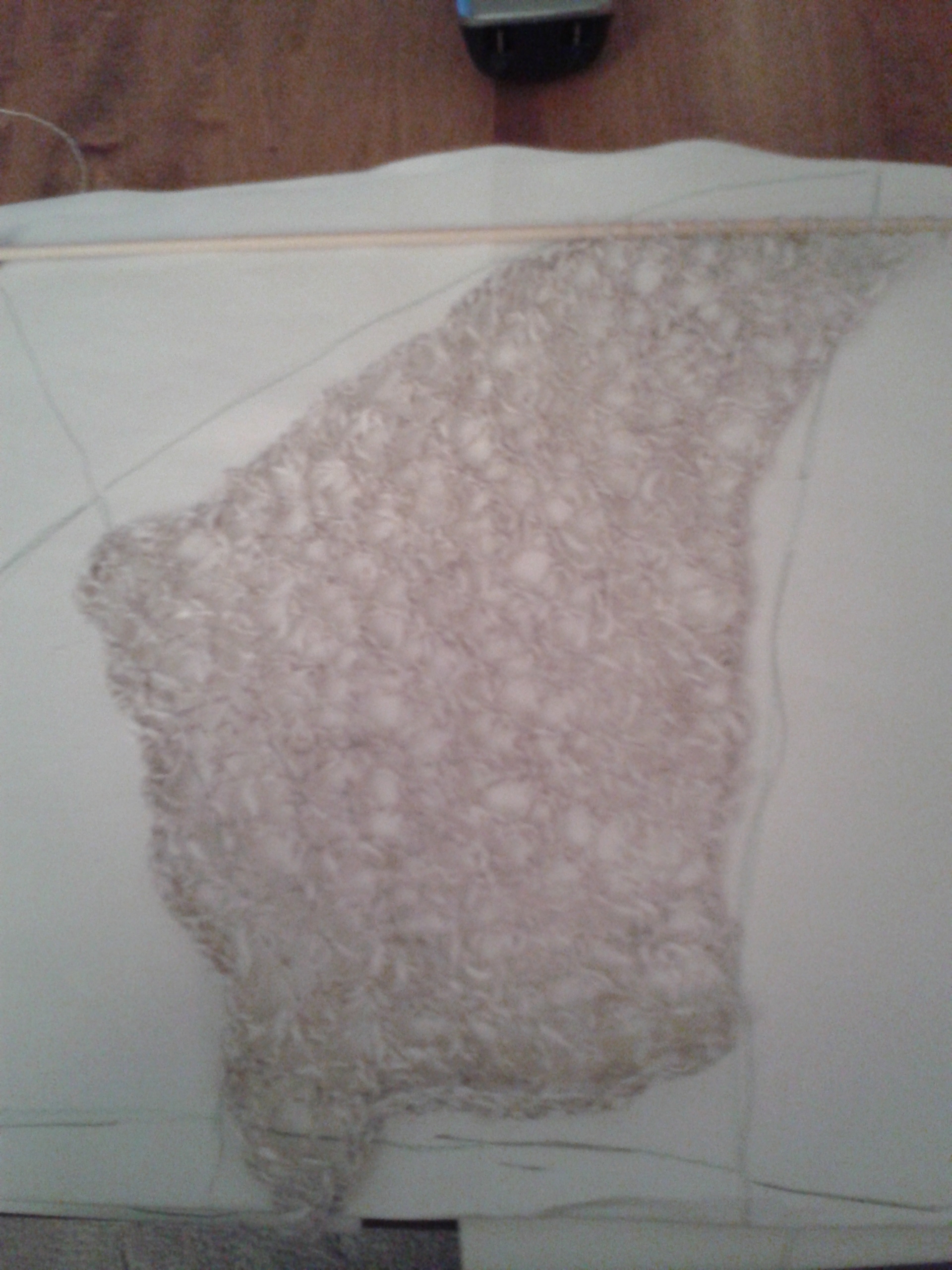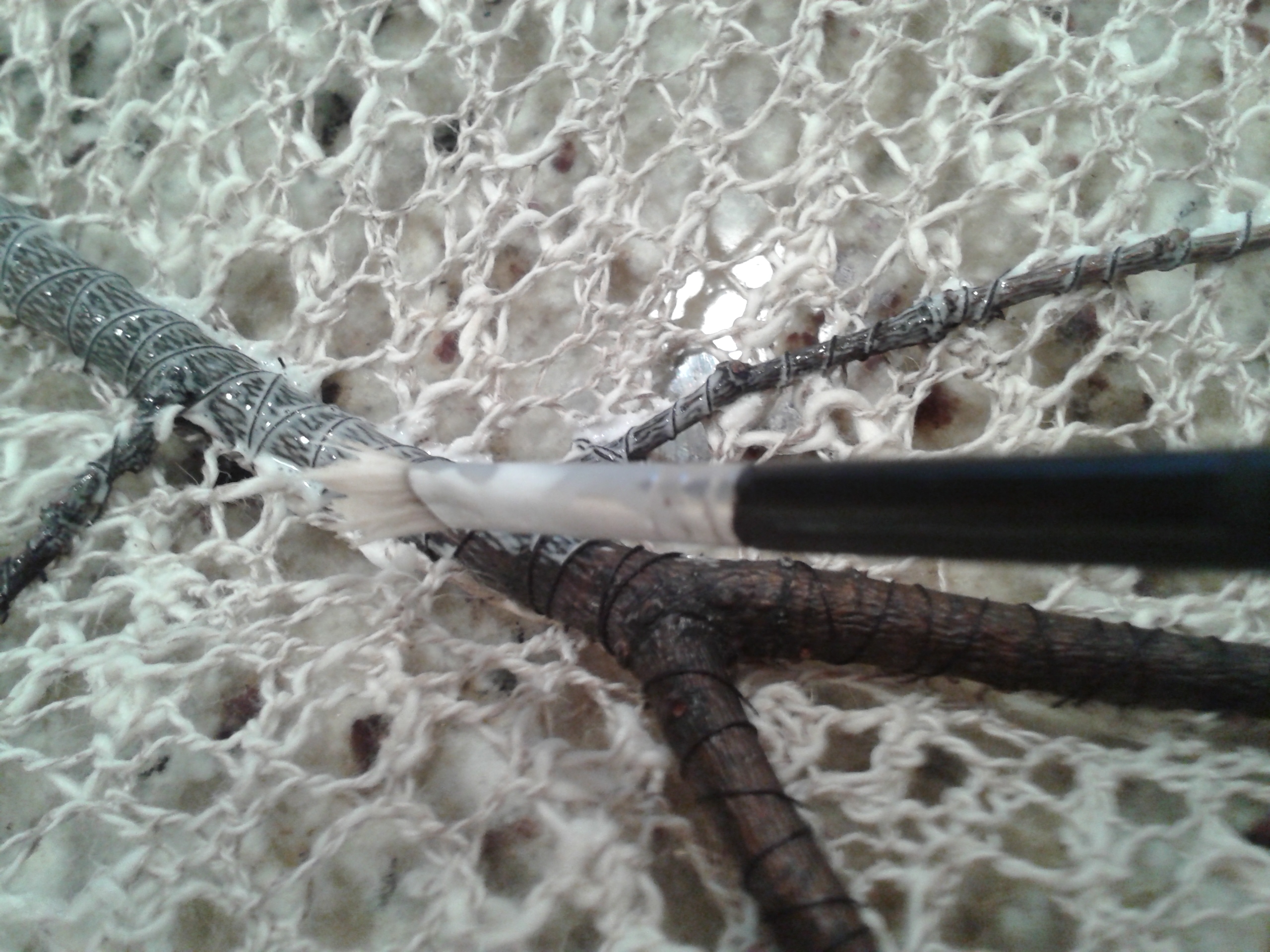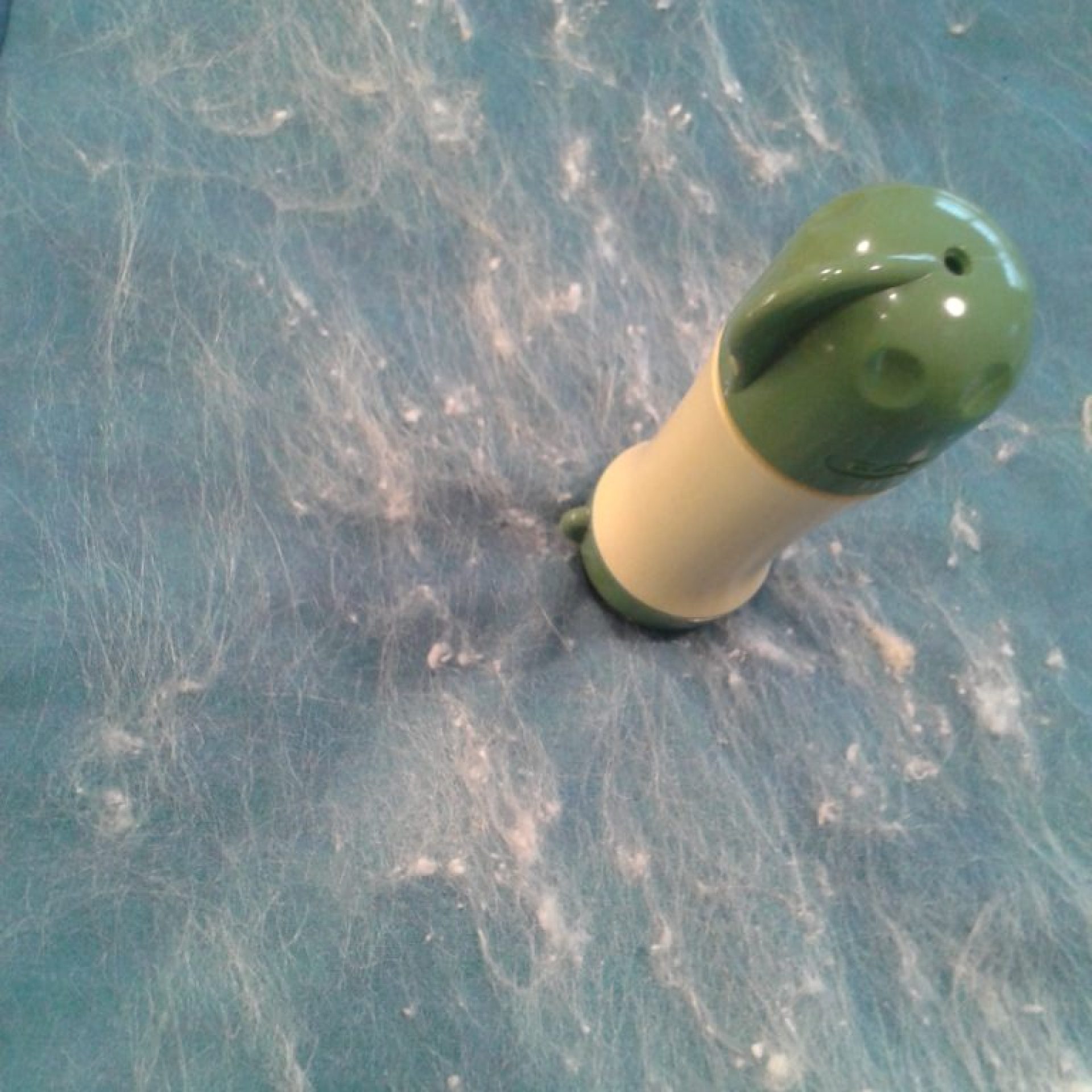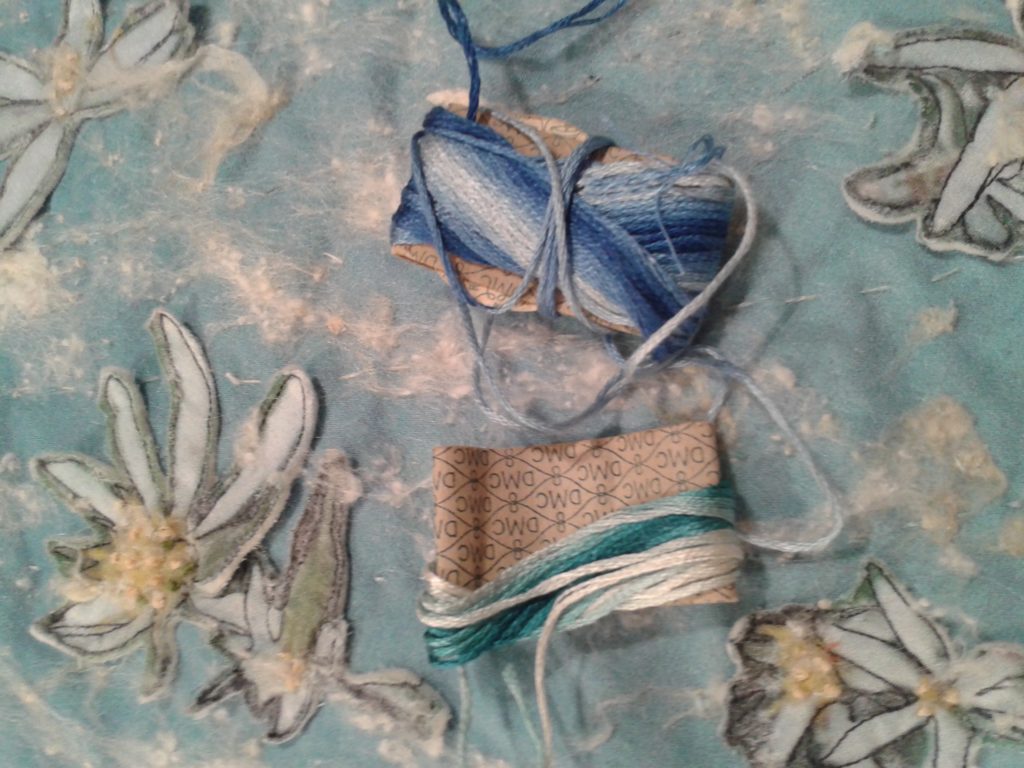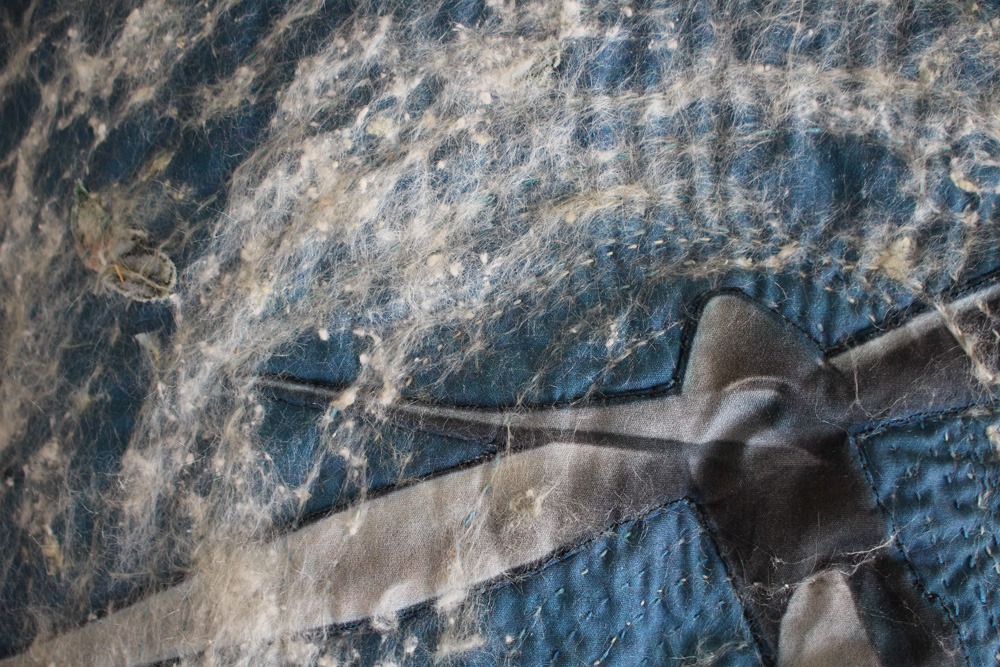Spring represents rebirth and the start of something new. In these troubling days, a project that represents this idea is all important to me. Last spring I photographed a magnolia in our little town of Fenwick. I had the photo printed on fabric as well as a second version that was printed a little larger, with the intent of adding a foreground dimension to the work.



I am using the larger overall image as background and started here by outlining and working some of the foreground flowers. Turning the quilt over, you are able to see the trapunto technique which employs stuffing to add dimension. Tiny slits are made in the batting underlay (I am trying bamboo for the first time) and polyester stuffed into the pockets.



The second printed version is now started. Sections are roughly cut out, backed with a stabilizer, then backed with polyester backing which I use to provide more puffiness and dimension. The sections are then trimmed back closer to the stitching line, polyester trimmed back to the stitching, then seam allowance pressed. Below is the start of the quilting detail.


The mid ground employs some of the combined flower imagery. I backed these sections with a thinner cotton quilt backing. All has been stitched around and trimmed back. The detailing employs my side to side “smocking” technique that provides texture to these more distant images.



I am now at the point of playing with the add-ons. It’s really just working on the composition to provide balance and lines for the eye to travel through the composition.



The visible background areas will be the next to work on.
In previous works of this applique series, I have researched the medicinal and other interesting information about each species. I may incorporate a textual component to the perimeter of the quilt. I’m undecided on colour as well.
Since my last update I have been working on the quilt as a daily “indulgence.” My mind becomes so consumed with the repetitive tranquillity of the process that the outside reality of our present day world is shut out. I have been working up the texture and dimension of the background and foreground. Stems are worked with stitches side to side to raise the tube-like fore. Appliqued petals are stitched strategically in some spots to create raised forms and tunnels where underlying images can be seen in darkened shadows.




I have now reached a point where the border is necessary to continue. I had just enough blue from my Turbulence quilt to add a border on 3 sides. I don’t think the bottom requires a border so this quilt will actually reverse what I had bordered for Turbulence. I want to extend the imagery over the edging to create the feeling of the sky extending infinitely. But until this step has been completed, I won’t know exactly what I will need.



Once I had the border stitched down I began the methodical and decisive process of selecting imagery from the remaining fabric remnants that would extend the magnolia into the infinity of sky. Mid-ground imagery was backed with iron on fusaline to prevent fraying but as I got towards the smallest petals at the top, I simply cut the pieces out. There was enough size in the fabric to keep the pieces intact. I used the finest needle that I could thread the quilting cotton through to stitch these delicate pieces down. Last of all I went around all edges with wallpaper size to strengthen and prevent fraying. Any fibres that did not flatten were trimmed away.
Below I have added the quilt as it presently stands. It’s interesting to analyse the composition from a photograph. I think the bottom right edge needs something to add “weight” and “balance.” I had originally wondered about adding words, but now I think the quilt will stand on its own, or could that be something to add to the bottom? Time to reflect again.



















